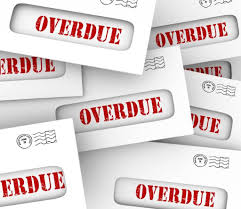Accountants See Trend in Late Payments From Large Customers
Accountants identify the new normal: big companies are paying their bills late, later, and latest.
When economic hard times hit in 2020, accountants and finance departments felt pressure to improve their organizations’ working capital positions. The longer companies could hold on to cash, the more liquid they were, and the safer they felt. Paying bills quickly meant dipping into cash reserves, possibly taking away money from new-product development, mergers, and acquisitions, marketing, or anything else that might drive top-line revenue. It was either that or be forced to rely for growth on expensive external financing.
Accountants knew that when it came to days payable outstanding, longer was better.
However, before the recession, many companies were reluctant to embark on payment-term extension programs for fear of disrupting their supply chains, losing suppliers, or forcing them to raise their prices. But in the face of what looked like economic Armageddon, such considerations seemed less compelling than bolstering working capital. Therefore, many large companies began telling suppliers (especially the smaller ones providing non-core or indirect goods and services) that payment schedules would be extended from 30 days to 45 days, or from 60 days to 90 days, and sometimes beyond.
To their surprise, it worked.
During the financial crisis, Gustavo Viera explains, small businesses, losing revenue, were afraid to challenge their big customers, and so they bit the bullet and accepted whatever payment terms were offered. Today, big businesses are sitting on mountains of cash, and delaying payments as long as possible has become, the new normal. Lots of organizations survived the downturn by getting smarter. They went through cost-cutting; improved working capital, and saw the benefits of extending payable. Today, accountants say, extending payable is a best practice and a good way to grow cash mountain.
Accountants warn not to accept the customer’s terms as a foregone conclusion. When companies embark on payment-term push back programs, they’re expecting resistance. Sometimes, if the supplier complains, they’ll just put it back on the old program. I’ve seen this from huge, huge corporations. They don’t have the desire to manage negotiations. They’re just hoping 80% or so of their suppliers will accept it without complaint.
Accountants suggest following the following seven strategic suggestions for how small businesses can resist extended payment terms and negotiate with their larger customers.
- Respect yourself. You might be small, but you may be providing a unique value that can’t be replaced. Know your competitive advantage with respect to other suppliers. Do you have a longstanding, successful relationship with the buyer? Are you cheaper? Maybe the buyer has nowhere else to go. Feel good about yourself. Don’t assume you’re at your customer’s mercy.
- Know yourself. Small businesses should know whether they’re a part of their buyer’s direct or indirect spending. If what you do directly affects your customer’s business, you have more leverage in negotiations. If what you provide is a commodity (paper clips, coffee cups, chairs), you’re more at risk. In either case, you should know your competition
- Work the price. Accountants suggest that a cash-flow-challenged business can offer early payment discounts. If, for example, your buyer wants to extend payments from 30 days to 60 days, you could offer a 2% cut in price if the buyer pays in 20 days. Accountants are less than enthusiastic about that strategy. I’m not that desperate to take that 2% haircut to get paid faster. On the other hand, if you’re a service provider, Marion suggests creating multiple, billable milestones. Typically, the person you’re negotiating with has a budget for the project. How it’s divided up is not his concern. If he’s got $50,000 for a project, he doesn’t care if it’s paid out in three or four stages, $20,000/$15,000/$15,000 or $20,000, and then three payments of $10,000. Manipulate something that matters to you, not to them.
- Avoid your customer’s accounts-payable department. I would want to go to the procurement and buying organization, not the finance organization. Finance wants to improve working capital; it sees all sellers as the same. Procurement will understand you better. Realize that AP and your client have very different interests. AP is incentivized to improve cash-flow metrics. That’s all. Your client, you have a relationship with. Let him worry about AP.
- Let accountants talk to accountants. When a business is telling you it’s planning to pay you late, that can wreak havoc with business and your mental equilibrium. To get emotion out of it, Marion suggests having someone else deal with collectibles. If you have an accountant or bookkeeper, have him make the call to AP. An accountant speaking to another accountant, they speak the same language.
- Know the history of the relationship. Accountants emphasize that it’s important to know how your customer has been paying you. If you’re on a 30-day program and the buyer has been paying after 60 days, and now it wants to move you to 60 days, well, it doesn’t really have much of an impact on your business. Or, you could say, You already have been paying me extremely late. There are no harm accountants say in “shaming” your customer.
- Suggest financing. In cases where getting paid late puts your business in a bind, and your customer is not willing to negotiate, accountants suggest asking if your customer is willing to enter into a supply-chain-financing agreement. In this process, you send your invoice (say it’s for $100) to a bank-managed portal. The bank immediately pays you $98 for the $100 invoice, no waiting. Your customer pays the bank $100 in 30 (or 45 or 60) days. Accountants believe this arrangement will grow in popularity in the coming years as everyone (the small-business supplier that gets paid quickly; the bank that collects a fee; and the buyer that pays at a working capital–friendly pace) can benefit.
There are electronic procurement platforms, such as Ariba’s, that allow for automated dynamic discounting, in which a supplier can say, “If you pay me on day 10, take a 2% discount; if you pay me on day 20, no discount; and if you pay me on day 30, the price rises.” But this requires the technology to get on the platform or others like it. If that’s not feasible, Accountants strongly urge small-business people to “pursue every avenue” to resist extended payment terms “without being overly aggressive. Think strategically. Ask yourself how you can connect with someone who’s willing to compromise; who’s willing to work something out.”
Remember: it’s always a hassle for your customer to find a new (and good) supplier.
Trend in Late Payments from Large Customers
Welcome to the Gutenberg Editor
The goal of this new editor is to make adding rich content to WordPress simple and enjoyable. This whole post is composed of pieces of content—somewhat similar to LEGO bricks—that you can move around and interact with. Move your cursor around and you’ll notice the different blocks light up with outlines and arrows. Press the
How to Increase Profit Margins Through Virtual CFO Services
How to Increase Profit Margins Through Virtual CFO Services

Great Accounting Firms Share These 10 Traits
Great Accounting Firms Share These 10 Traits which has gone far beyond the paper-pushing days and now involves acting as a virtual CFO

Tax Accountant in Miami Cope with IRS Tax Season Delay
Tax Accountant said IRS delays start of tax season for individual returns would be postponed until February 17 with some as late as March

Miami Accountants Philosophy of Up or Out
Its up or out for Miami Accountants firms are faced with the dilemma of keeping long-term managers that are not ready to be equity partners or let them go.

Contadores en Miami Explican Auditorías del IRS
Contadores en Miami, Gustavo A Viera CPA, explica los pasos de una auditoría, desde la notificación de la auditoría hasta el cierre de la misma
Home » Blog » accountant » Accountants See Trend in Late Payments From Large Customers

